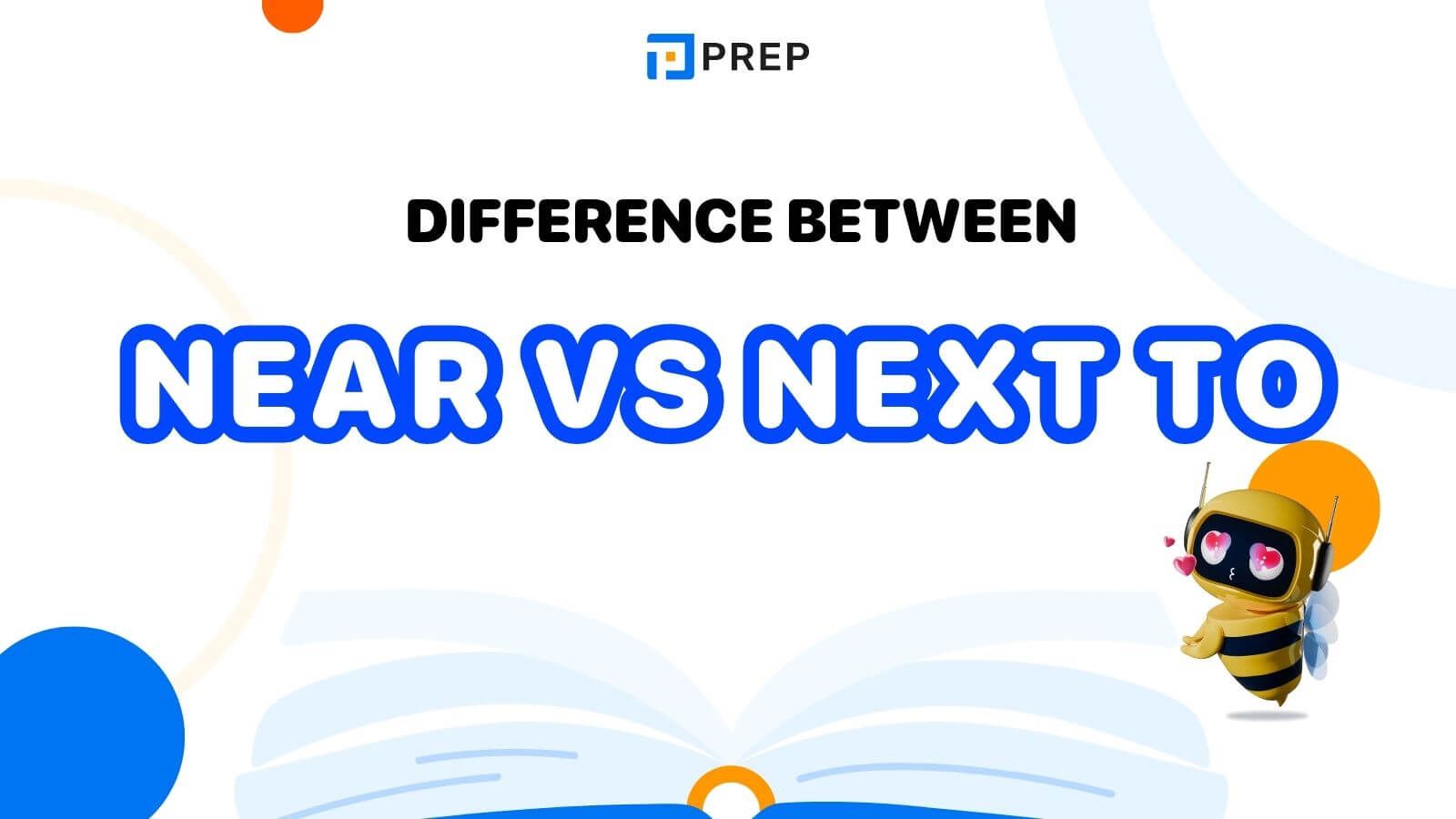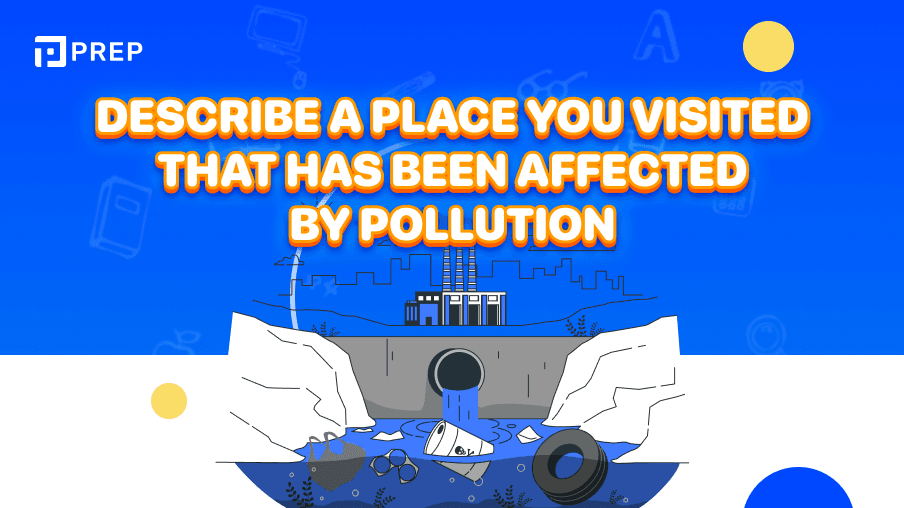Search blog
Near to, Near, and Next to: What Are They? Distinguishing Between Near to, Near, and Next to
"Near to," "Near," and "Next to" all mean "close," but each has different structures and usage. Let’s explore them together in the article below!

I. What is Near?
"Near" is pronounced /nɪr/ and serves as an adverb, adjective, verb, preposition, and prefix, meaning: close or almost. For example:
|
Role & Usage |
Example |
|
Adverb |
|
|
Adjective:
|
|
|
Verb: approaching (in time), getting closer (in space) |
|
|
Preposition |
|
|
Prefix, for example:
|
|
II. What is Near to?
"Near to" is a phrase used in English to indicate closeness in distance or time between two objects. For example:
-
The school is near to my house.
-
We are near to the deadline.
The phrase "near to" often has a similar meaning and usage to "near," but the addition of "to" makes the sentence clearer or emphasizes the proximity.
Note: When expressing movement closer, we often use "near to" instead of "near." For example: She moved near to her office, making her commute much shorter.
III. What is Next to?
1. Concept
"Next to" is an English phrase used to describe two people or objects that are very close to each other without any distance between them. For example:
-
The library is next to the coffee shop.
-
Lisa sat next to me during the meeting.
2. Next to’s collocations
|
Next to’s collocations |
Meaning |
Example |
|
next to last |
Near the end, just before the last one. |
He finished next to last in the race. |
|
the next to last |
Near the end, just before the last one. (Similar to "next to last") |
He was the next to last person to leave the office. |
|
next door to someone/something |
Right next to someone or something; adjacent. |
They live next door to us. |
|
cleanliness is next to godliness |
Cleanliness is almost sacred, emphasizing the importance of maintaining hygiene. |
My mother always said that cleanliness is next to godliness. |
|
in next to no time |
Very quickly, in a very short amount of time. |
We'll be there in next to no time. |
3. Next to’s synonyms
|
Next to’s synonyms |
Meaning |
Example |
|
Beside /bɪˈsaɪd/ |
Next to or at the side of; in close proximity to. |
Anna sat beside her best friend during the concert. |
|
Along /əˈlɔŋ/ |
Moving in a constant direction on (a path or any linear object); in a line or in a direction parallel to something. |
We walked along the riverbank, enjoying the scenery. |
|
Alongside /əˈlɔŋˌsaɪd/ |
Next to or parallel with; beside. |
The new road runs alongside the railway line. |
|
Adjoining /əˈdʒɔɪnɪŋ/ |
Located next to or having a common boundary; adjacent or contiguous. |
They rented the adjoining apartment for more space. |
|
Adjacent /əˈdʒɔɪnɪŋ/ |
Next to or adjoining something else; neighboring. |
The library is adjacent to the school. |
|
Neighboring /ˈneɪbərɪŋ/ |
Láng giềng, gần kề. |
We often visit the neighboring town for shopping. |
|
Bordering /ˈbɔrdərɪŋ/ |
Being located next to or near another; situated in close proximity. |
The garden is bordering the forest. |
|
side by side /saɪd baɪ saɪd/ |
Being adjacent to a boundary or border; situated along the edge of something. |
The two companies worked side by side on the project. |
|
Shoulder to shoulder /ˈʃoʊldər tə ˈʃoʊldər/ |
Positioned next to each other; together in close proximity. |
The soldiers stood shoulder to shoulder in the face of the enemy. |
|
At someone's elbow /æt ˈsʌmwʌnz ˈɛlboʊ/ |
Very close together, often used to describe people working together in unison or solidarity. |
The assistant was always at the manager's elbow, ready to help. |
IV. The Difference Between Near to, Near, and Next to
Let's join PREP to differentiate between Near to, Near, and Next to right below!
|
Near |
Near to |
Next to |
|
|
Meaning |
"Near" is often used as a preposition or adverb to indicate closeness in terms of distance or time. |
"Near to" also has a similar meaning to "near," indicating proximity in distance or time, but the addition of "to" can make it clearer or emphasize closeness, especially when highlighting movement closer. |
"Next to" is used to indicate an adjacent position, right beside with no significant distance in between. |
|
Example |
The school is near my house. |
The school is near to my house. |
The library is next to the coffee shop. |
V. Exercises to Distinguish Near to, Near, and Next to
To better understand the usage and differences between Near to, Near, and Next to, let’s complete the exercise below together!
1. Exercise: Fill in the blanks with "near," "near to," or "next to" as appropriate.
-
The restaurant is ______ the park.
-
He lives ______ the grocery store, so he can easily walk there.
-
She moved ______ her office, making her commute much shorter.
-
The school is ______ the library and the community center.
-
My house is ______ the train station, only a five-minute walk away.
-
The coffee shop is ______ the bookstore, so we can visit both easily.
-
His office is ______ the top floor, giving him a great view.
-
They built a new playground ______ the school.
-
Our meeting room is ______ the reception area.
-
The project deadline is ______, and we need to speed up.
2. Answer keys
|
|
In this article, PREP has shared with you the concepts, usage, and differences of Near to, Near, and Next to. Be sure to follow PREP regularly to stay updated with more valuable English knowledge!

Comment
Search blog
Most read
Register for a learning roadmap consultation
Please leave your information, and Prep will contact you for consultation right away!


![[SAMPLE SPEAKING] IELTS Speaking Part 1: Advertisement](https://cms-static-assets.prepcdn.com/uploads/ielts_speaking_part_1_advertisement_0fed324a86.png)









